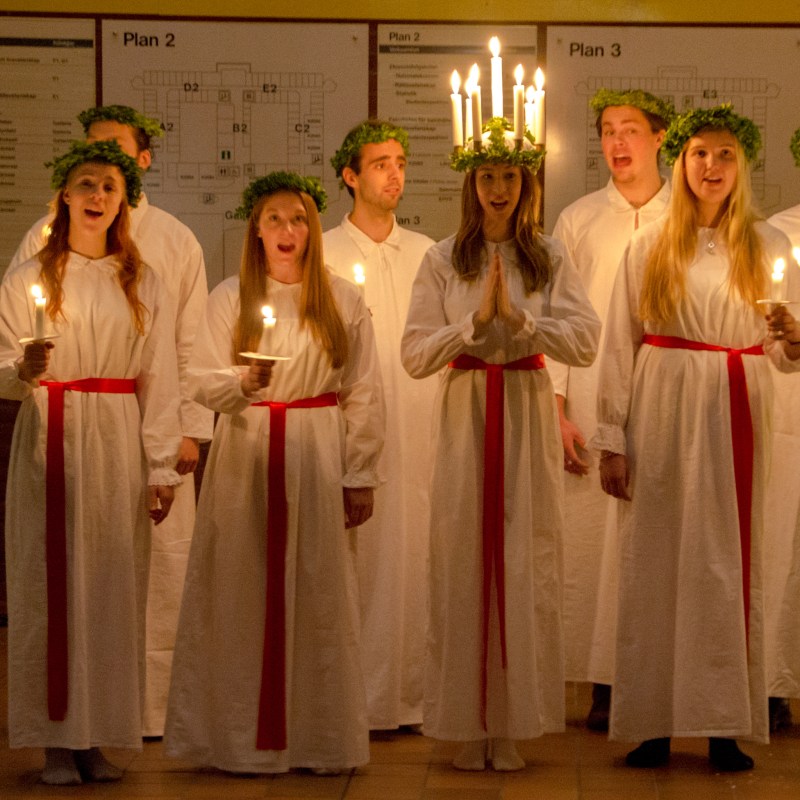
Is Christmas by any other name still Christmas? Well, yes! And, it does have many names and is indeed celebrated differently all over the globe. In Scandinavia, around Christmas time, one of the largest celebrations is for St. Lucia, a young girl who was martyred in 304. St. Lucia’s Day is celebrated annually on December 13.
Videos by TravelAwaits
What Is St. Lucia Day
St. Lucia Day marks the beginning of the Christmas season and honors the memory of St. Lucia, a young Christian girl who was persecuted and eventually killed after she was accused of smuggling food to Christians living and hiding in the mazes of underground catacombs below the city of Rome.
The tradition dates back to 1764. Travel writer Rick Steves writes, “the Scandinavian version of the legend is that a young woman born of rich and noble parents — dressed in a white gown with a red sash and wearing a crown of lingonberry twigs and blazing candles — traveled from one farm to the next in the early morning on December 13. She carried a torch to light her way, bringing baked goods to each house, returning home by sunrise.”
Where Is St. Lucia Day Celebrated
Today, St. Lucia’s Day is celebrated on December 13 throughout Sweden, Denmark, Norway, Bosnia, Croatia, and Finland’s Swedish-speaking areas. Townspeople honor her with a candle-lit procession described by the cultural website Sweden.se as “one of the more exotic-looking Swedish customs.”
How Is St. Lucia Day Celebrated
Like the legend, the procession is led by a girl, dressed as St. Lucia, wearing a traditional white dress, a red sash, and a crown of candles. She is followed closely by candle-holding “handmaidens” and “star boys,” also dressed in white gowns, carrying sticks topped with stars and paper cone hats on their heads.
It is an honor to be chosen as St. Lucia, and traditionally small towns all across Scandinavia bestow it upon one of their own. According to WhyChristmas.com, those chosen as St. Lucia become immediate local celebrities, often making public appearances, visiting hospitals, and performing charitable work.
On the day of the festival, schools and businesses close early so everyone can prepare. After sunset, the procession of children begins, each singing traditional St. Lucia songs. The slow-moving, candlelit parade is described as moving and “a reminder of the life in the peasant communities of the past.”
Traditional food served at each festival varies by town but often features Lussekatts, which are buns flavored with saffron, covered in raisins, and served with Swedish mulled wine or coffee. Children are also known to pass out ginger snaps during the procession.
For more holiday inspiration, read on!
